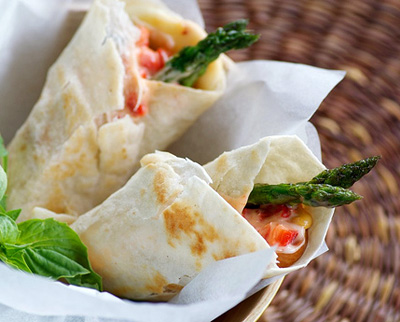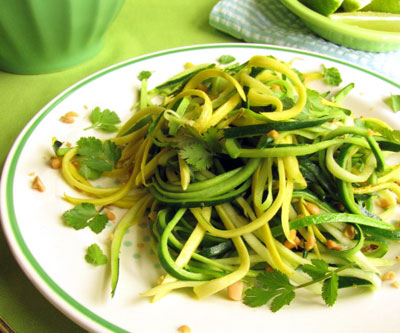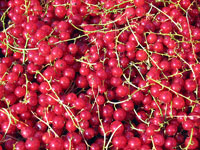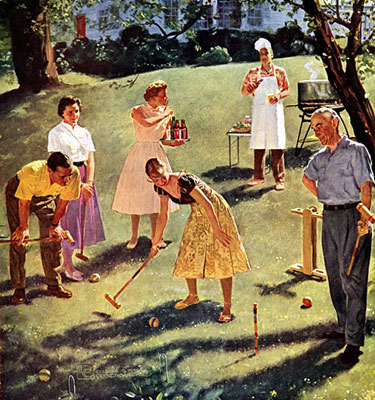 Refreshing, sweet, crunchy texture, pretty....I love this! And as my husband schlurps away on this, he keeps repeating, "this is so good, but it's not soup". I'm pretty sure he's doing it to annoy me, since I had an annoyed reaction when he said it. So he knows he's pushing my buttons, and it's working. "Of course it's soup, duh!", I said. We're such great communicators.
Refreshing, sweet, crunchy texture, pretty....I love this! And as my husband schlurps away on this, he keeps repeating, "this is so good, but it's not soup". I'm pretty sure he's doing it to annoy me, since I had an annoyed reaction when he said it. So he knows he's pushing my buttons, and it's working. "Of course it's soup, duh!", I said. We're such great communicators.
Anyway, he keeps mumbling, "soup is hot". Yes, generally soup is thought of as being hot or warm and I will give him the fact that in the America's, fruit soups are not as common as warm savory soups. But,This Is Still Soup. And...chilled fruit soups are very common in Eastern European cultures....the mold from which we were both cut.
So, this is soup. Let's not mention that him and I have both done our damage on an infinite number of bowls of chilled borscht...which he calls soup? I rest my case.

 With our year-round temperate San Diego climate, we have picnicked in November, in March, and many months in between. But like chilled watermelon, slushy lemonade, and buttery ears of sweet corn, picnics taste best in the summer months.
With our year-round temperate San Diego climate, we have picnicked in November, in March, and many months in between. But like chilled watermelon, slushy lemonade, and buttery ears of sweet corn, picnics taste best in the summer months. Summer is nearly here. For many Memorial Day weekend marked the beginning of summer with barbecues and backyard parties. And with the hot weather that we on the East coast are already having, it's easy to start entertaining like it's summer. I found myself pulling out the grill for the first time yesterday, and it couldn't have happened any sooner. My oven will be on hiatus for the next few months. Right now with the availability of fresh spring salad greens and herbs in farmers' markets, I find myself creating recipes that require little or no cooking. I'm taking every opportunity to use garden-fresh produce, especially herbs.
Summer is nearly here. For many Memorial Day weekend marked the beginning of summer with barbecues and backyard parties. And with the hot weather that we on the East coast are already having, it's easy to start entertaining like it's summer. I found myself pulling out the grill for the first time yesterday, and it couldn't have happened any sooner. My oven will be on hiatus for the next few months. Right now with the availability of fresh spring salad greens and herbs in farmers' markets, I find myself creating recipes that require little or no cooking. I'm taking every opportunity to use garden-fresh produce, especially herbs. Our first little zucchinis appeared on the scene yesterday. We picked them, put them out at the farm stand, and someone bought them. Yeah, I know. That won’t last forever. There will come a time, say mid-August, when you won’t be able to give away a summer squash, they’ll be so ubiquitous. Just don’t do what I did a few years ago and try to feed them to your dog. (Poor Gus.) Honestly, there are plenty of delicious things to do with summer squash, and I’m determined to convert a few squash-bashers this summer with a couple of my recipes.
Our first little zucchinis appeared on the scene yesterday. We picked them, put them out at the farm stand, and someone bought them. Yeah, I know. That won’t last forever. There will come a time, say mid-August, when you won’t be able to give away a summer squash, they’ll be so ubiquitous. Just don’t do what I did a few years ago and try to feed them to your dog. (Poor Gus.) Honestly, there are plenty of delicious things to do with summer squash, and I’m determined to convert a few squash-bashers this summer with a couple of my recipes. Red currants, the beautiful ruby red berries pictured above, make the perfect tart jelly. Growing in grape-like clusters on small bushes, the fruit has become a rarity in the United States. Mistakenly thought to promote a tree disease, currant bushes across the country were systematically uprooted in the early 1900s, and production was prohibited for many years.
Red currants, the beautiful ruby red berries pictured above, make the perfect tart jelly. Growing in grape-like clusters on small bushes, the fruit has become a rarity in the United States. Mistakenly thought to promote a tree disease, currant bushes across the country were systematically uprooted in the early 1900s, and production was prohibited for many years.
